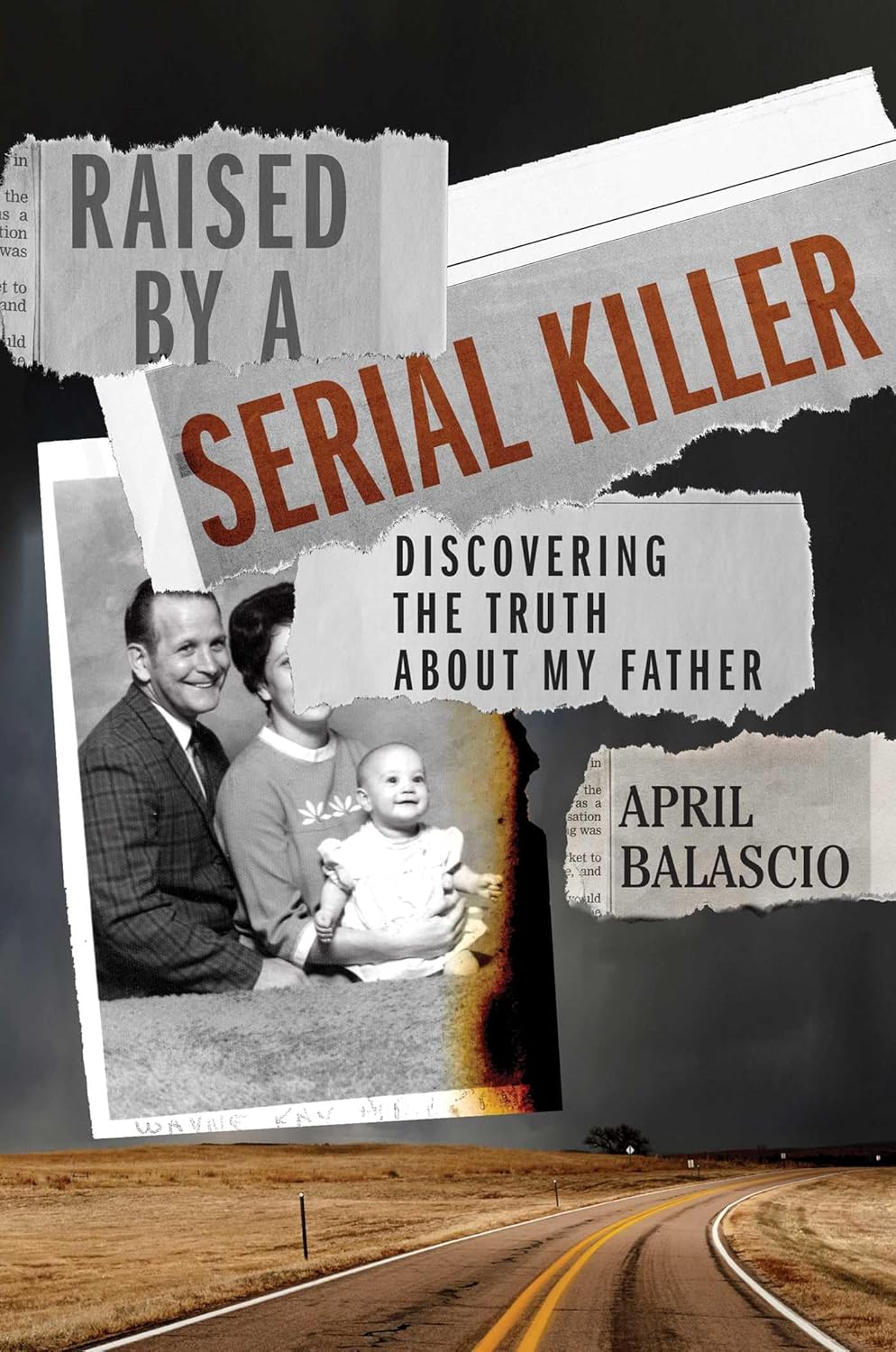Raised by a Serial Killer: Discovering the Truth About My Father
- By April Balascio
- Gallery Books
- 352 pp.
- Reviewed by Diane Kiesel
- February 7, 2025
An utterly riveting recollection of life with a monster.

Throughout April Balascio’s squalid childhood, she and her family skipped out of their many crummy rental houses one step ahead of the landlord. Yet even in her child’s brain, Balascio suspected there were darker reasons for slinking away. Turns out, her instincts were right; the family was one step ahead of the homicide squad.
Years later, those nagging thoughts and an internet search would lead Balascio to drop a dime on her violent, vicious father, unmasking him as the notorious serial killer Edward Wayne Edwards. Between 1977 and 1996, Edwards left behind at least five bodies — probably more — in those neighborhoods they’d so quickly fled. Having spent a decade as a New York City prosecutor putting murderers, rapists, and child abusers behind bars, followed by 25 years as a judge in the state’s felony trial court, it takes a lot to shock this reviewer, but Raised by a Serial Killer managed to do it. This book is disturbing, haunting, and very good.
In spare and unvarnished prose, Balascio recounts her hell on earth growing up in an impoverished household ruled by a textbook domestic abuser. Charming to folks in the outside world (when he wasn’t killing them), Edwards was a monster at home. With his own horrid childhood behind him — he spent time in an orphanage where nuns shoved him into an ice-cold shower for bed-wetting and encouraged other boys to beat him — Edwards repeated the pattern by knocking his wife senseless for burning the meatloaf and by whipping his daughter with a belt for misplacing a pair of nail-clippers.
For playing with crayons rather than cleaning their room, he hung his 6- and 4-year-old sons from the ceiling of the garage by their belt loops. These punishments were routine and severe; Edwards broke his wife’s jaw twice and nearly severed her hand with a kitchen knife. His abuse was also sexual. He gave the author a hickey when she was a teenager to make a boyfriend jealous and inspected and squeezed her growing breasts while her cowed mother watched in silence.
The book is divided into chapters recounting Balascio’s miserable girlhood juxtaposed with stories of Edwards’ life before her birth. He was a lying narcissist, she writes, whose wanderings “began with a young woman to whom he promised a new life, or marriage, or an adventure — a woman he would quickly replace with another along the way. A woman and a scam. That was his MO.”
As a child, Edwards filched money from his grandmother’s purse and stole bicycles from other kids. He molested female classmates on the way home from school. As an adult, he graduated from stealing hubcaps to the whole car, speeding across the country sticking up gas stations until, in 1961, after busting out of jail in Portland, Oregon, he proudly ended up on the FBI’s Ten Most Wanted list. Eventually nabbed, he spent five years in prison until being paroled in 1967.
A conman to his core, Edwards convinced a nice Christian girl, Kay Hedderly (the author’s long-suffering mother), to become his fourth wife after getting her pregnant within months of their meeting. Honing his gaslighting skills, in 1972, he wrote a bestseller, Metamorphosis of a Criminal, went on a book tour, and appeared on the popular television show “To Tell the Truth,” where he sat alongside two other men and stumped celebrity panelists Alan Alda and Kitty Carlisle about which of the trio was the “reformed” felon.
But Edwards never changed his ways. He dragged his family through dilapidated rental houses and trailer parks from Wisconsin to Florida and places in between, stealing from employers, seducing other men’s wives, and continuing his reign of terror at home. He forced his sons to help him burn down their Portersville, Pennsylvania, rental to hide the fact he’d sold the landlord’s furniture that came with it. Unfortunately for Edwards, a shirt he’d left at the scene led to his arrest and a two-year jail stint.
Balascio graduated from high school and escaped her father’s house. In her place came a foster son, Dannie Boy, who legally changed his surname to Edwards. He joined the military and took out $250,000 in life insurance, naming his new foster father as the beneficiary. Injured in basic training, Dannie Boy was about to get a medical discharge in May 1996 when he mysteriously went AWOL. His decaying body — with a gunshot wound to its head — was found in a shallow grave near Edwards’ house a year later. His now-grown children whispered among themselves: Could the killer be dear old Dad?
Meanwhile, now safe with a husband and children, Balascio battled her own demons; domestic violence had taken its toll. She packed on 200 pounds and suffered from panic disorder and ulcers. Eventually, gastric-bypass surgery and a vigorous workout program, as well as time and distance, gave her the strength to tackle her one big demon.
On a sleepless night in 2009, she thought about her favorite childhood home, a farmhouse in Wisconsin, from which the family had bolted nearly 30 years earlier. She googled “cold case 1980 Watertown Wisconsin” and discovered an article about a couple who vanished on August 9, 1980, after a wedding reception at a venue called Concord House. Edwards had worked at Concord House, and Balascio recalled with a shudder an offhand comment he’d made at the time:
“I bet they find them in a field.”
Six days after their disappearance, they were found — in a field. The young man had been stabbed, the woman strangled and possibly raped. Two weeks after the bodies were discovered, the Edwards family high-tailed it out of town. Her memory refreshed, Balascio called the cold-case hotline and exacted her revenge by giving police a DNA sample, which nailed Edwards, who was convicted of the killings and sentenced to life in prison.
Unable to bear incarceration for life, and still needing to be in power and control, he confessed to killing Dannie Boy in Ohio, a state that he knew had the death penalty. In March 2011, Edwards was sentenced to death for his foster son’s murder, with the execution date set for August 31, 2011. But in April, he died alone in his jail cell. A fitting end.
Diane Kiesel is a former judge. She is the author of Domestic Violence: Law, Policy and Practice, published in 2017 by Carolina Academic Press. Her latest book is When Charlie Met Joan: The Tragedy of the Chaplin Trials and the Failings of American Law.

